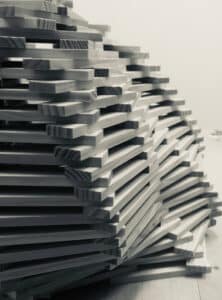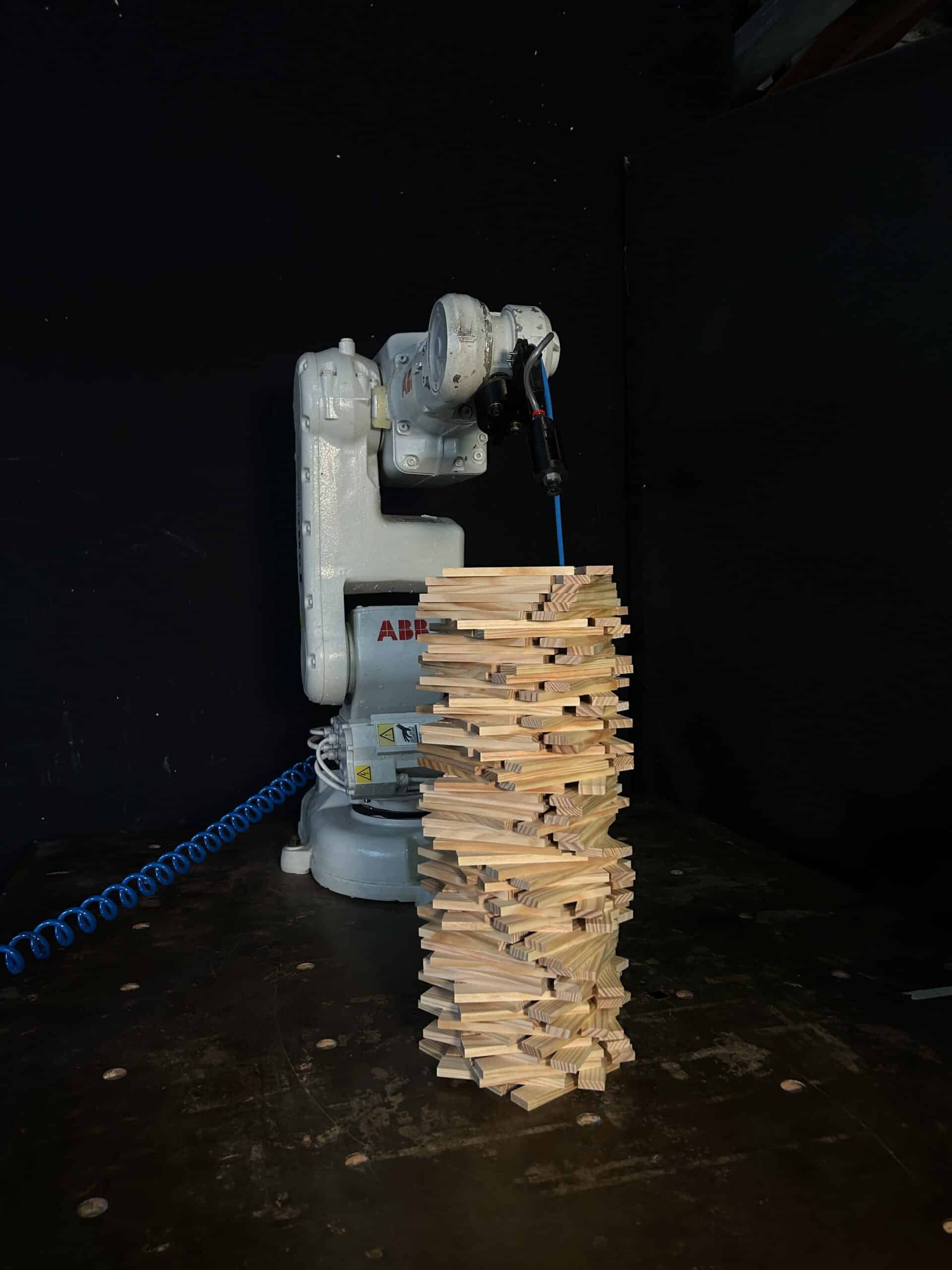
Photo Credits: ITI TUWien / Zeynep Aksöz Balzar
This experimental workshop investigates how spatial rules can be encoded, interpreted, and reimagined through a matrix-based design system that combines physical play, symbolic abstraction, and generative algorithms. Using Kapla blocks as a tangible grammar of structure, students will formulate construction rules—based on orientation, adjacency, support, and repetition—and encode them within colour-coded matrices. These matrices serve as both visual languages and machine-readable blueprints, in which each colour carries meaning and spatial logic.
Throughout the course, the matrix functions as a semiotic surface: a compressed 2D representation of 3D spatial rules, material constraints, and assembly possibilities. Students will explore how their rule-based systems translate into this matrix form, and how such abstractions can be used as training data for Generative Adversarial Networks (GANs). The goal is not to generate finished designs, but to prompt unexpected variations—emerging from the machine’s interpretation of human-devised structures.
The human designer plays an essential role in this loop, not only by defining the initial rule set but also by interpreting the outputs: curating, simulating, and re-evaluating the matrices generated by the GAN. In this way, the course foregrounds interpretation as a design act, positioning AI as a co-author whose contributions require critical and creative human response.
The final phase of the course involves robotic construction: students will simulate and test various GAN-generated matrices for structural stability and semantic fidelity, select one, and build it using robotic pick-and-place routines. This rematerialization process completes the cycle from embodied rule-making to digital abstraction, from AI interpretation back into physical form.
Learning Objectives
- Understand how to define and encode spatial rules as machine-readable information through colour-coded matrices.
- Explore the matrix as a medium of translation between physical structure, symbolic logic, and digital representation.
- Develop sensitivity to the layered nature of interpretation in design—from physical assembly to data abstraction to AI-generated variation.
- Critically engage with machine learning outputs as material for human interpretation and decision-making, not as final designs.
- Navigate the conversion of data across different layers: from embodied construction to digital matrix, from matrix to AI-generated variation, and from digital back to robotic materialization.
KEYWORDS: machine learning, matrices, creative coding, computational design







